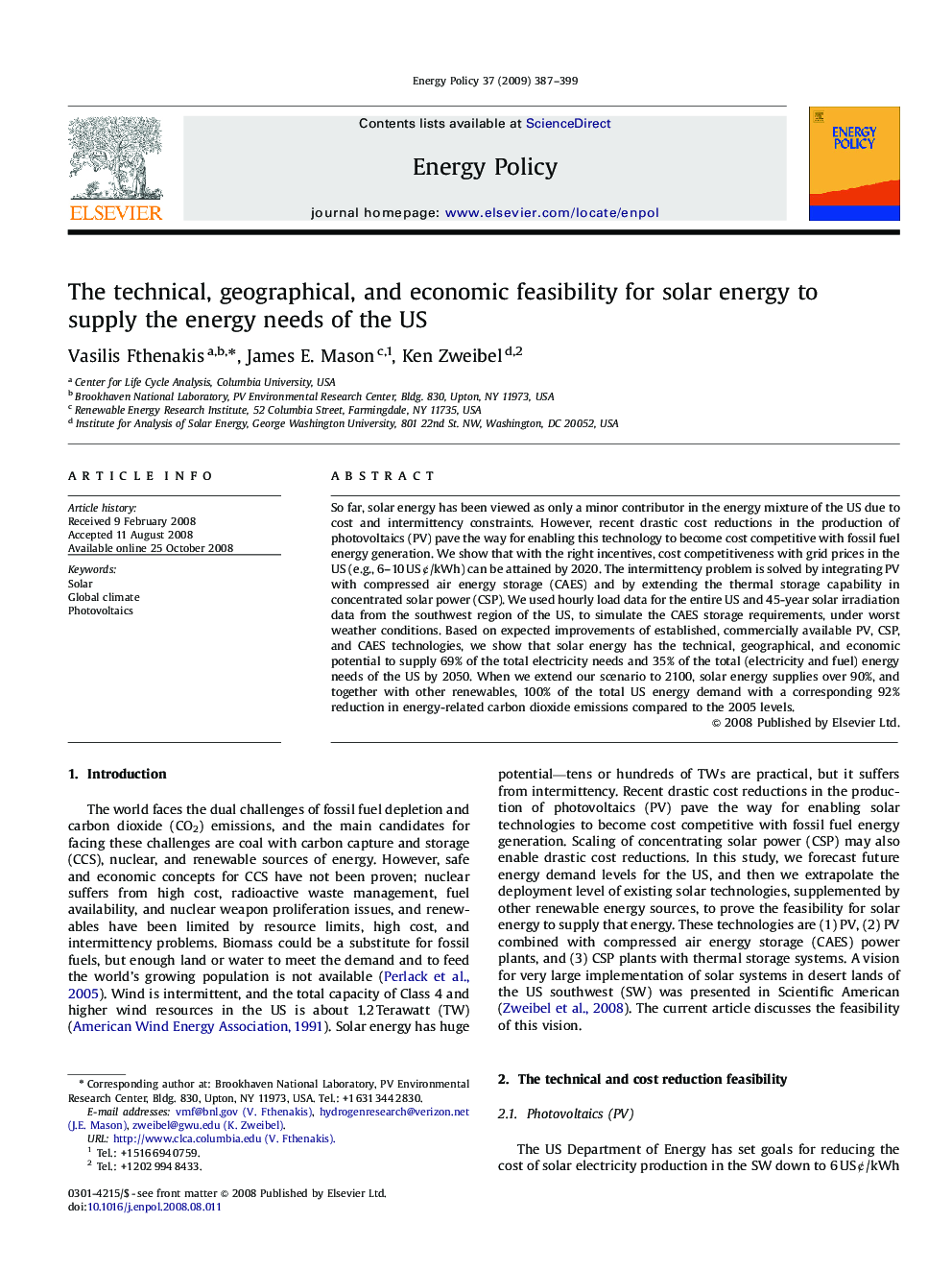| Article ID | Journal | Published Year | Pages | File Type |
|---|---|---|---|---|
| 993760 | Energy Policy | 2009 | 13 Pages |
So far, solar energy has been viewed as only a minor contributor in the energy mixture of the US due to cost and intermittency constraints. However, recent drastic cost reductions in the production of photovoltaics (PV) pave the way for enabling this technology to become cost competitive with fossil fuel energy generation. We show that with the right incentives, cost competitiveness with grid prices in the US (e.g., 6–10 US¢/kWh) can be attained by 2020. The intermittency problem is solved by integrating PV with compressed air energy storage (CAES) and by extending the thermal storage capability in concentrated solar power (CSP). We used hourly load data for the entire US and 45-year solar irradiation data from the southwest region of the US, to simulate the CAES storage requirements, under worst weather conditions. Based on expected improvements of established, commercially available PV, CSP, and CAES technologies, we show that solar energy has the technical, geographical, and economic potential to supply 69% of the total electricity needs and 35% of the total (electricity and fuel) energy needs of the US by 2050. When we extend our scenario to 2100, solar energy supplies over 90%, and together with other renewables, 100% of the total US energy demand with a corresponding 92% reduction in energy-related carbon dioxide emissions compared to the 2005 levels.
